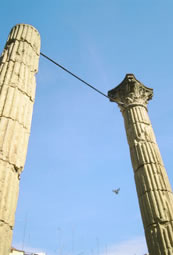
Baroque Heritage
Characterized by an excess of ornamentation that represents the decadence of the Renaissance, the baroque style predominated in Europe during an important part of the 17th century. After the birth of the Baroque in Italy towards 1600, it did not take long to scatter over all Europe as a religious art, demonstration of the power of the monarch, and as a protestant and bourgeois art of realistic spirit and local customs subject matter. The optimistic and idealistic life’s vision of the the Renaissance was substituted for a pessimistic and realistic vision. The experiences exchange was fast and frequent thanks to the artists’ journeys and the circulation of the works through the engraving.In the Iberian Peninsula, the economic decadence after the death of Felip II, the internal withdrawal and the isolation and the faithfulness to the Counter-Reformation are factors that help to understand the special outbreak of the Castilian baroque, which increased the stylistic and syntactic techniques of the vocabulary, the rhetoric and the literary composition. The circumstances that entailed the appearance of the Catalan baroque were similar to those of the Castilian but, moreover, one of the acutest crises that the country has ever suffered and some own historical conditions influence it.
In fact, the first purely baroque demonstrations were not produced until the beginning of the 17th century and they went on during the whole 18th, then with elements of rococo aesthetic. In general, the influence of the main Castilian subjects and authors (Luis de Góngora, Calderón de la Barca, Baltasar Gracián) was sensed especially in the vocabulary and the syntax of the poetry and the theater Catalan, and also in the predication, in the poetic contests of the period and even in the popular genres.
At patrimonial level, the religious architecture - churches mainly - dominates the construction of buildings of the period in the Costa Daurada. They stand in a total of thirty-eight villages: Alió, Falset, Ginestar, Gratallops, Puigpelat or Salomó are some of them.
